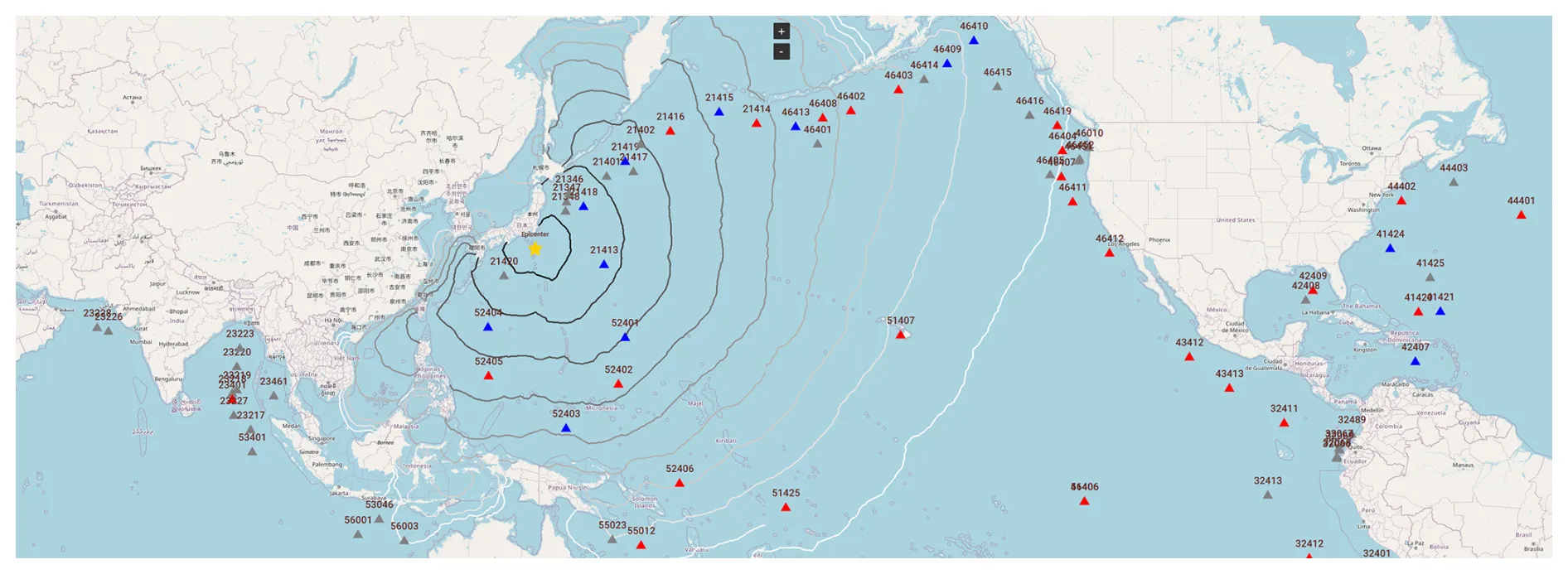The recent global collapse that affected systems in airports, businesses, and other critical sectors has brought attention to CrowdStrike, one of the leading cloud cybersecurity platforms. This incident with CrowdStrike, which has caused chaos in various sectors, has highlighted the interdependence of digital infrastructures worldwide.
The disruptions caused by CrowdStrike were not limited to a single country or industry, but spread internationally, impacting everything from airlines to banks and emergency services. Companies that depend on key platforms like Microsoft Azure and operating systems like Windows were severely affected, demonstrating how vulnerable these infrastructures are when a cybersecurity tool suffers a major failure.
In addition to affecting critical operations, this incident with CrowdStrike exposes the growing dependence of companies on the cloud and the importance of cybersecurity in global digital infrastructure.
The disruption caused by CrowdStrike left millions of users and businesses without access to their essential services, which generated considerable financial losses and a widespread disruption of daily operations.
As we move into an increasingly digitalized environment, it becomes vital to understand what caused this failure, what role CrowdStrike played in protecting these systems, and how such a prominent cybersecurity platform could have failed in this way, triggering an event with global repercussions. Below, ITD Consulting provides further details on the CrowdStrike incident.

What is CrowdStrike?
CrowdStrike is a cybersecurity company founded in 2011 by George Kurtz, former CTO of McAfee. In just over a decade, CrowdStrike has positioned itself as one of the most influential cybersecurity firms in the world, with more than 29,000 clients.
CrowdStrike's headquarters are located in Texas, and it has participated in key investigations such as the 2014 Sony Pictures hack and the cyberattacks on the Democratic Party between 2015 and 2016.
CrowdStrike's mission is to detect and prevent large-scale cyberattacks. Its primary tool, Falcon Cloud Security, is designed to stop cloud breaches and protect systems running on Windows and Azure. However, a recent failure in this CrowdStrike platform has generated an unprecedented crisis, affecting businesses worldwide.
The CrowdStrike Failure and Its Global Impact
The most recent incident related to CrowdStrike involves a defective update to its Falcon tool, which caused massive problems for businesses and government systems that rely on Microsoft Azure and Windows. According to CrowdStrike reports, the failed update generated blue screen errors (BSOD), which led to the paralysis of critical systems worldwide.
The problems caused by CrowdStrike were not limited to airports and airlines. Banks, healthcare systems, tech companies, and sectors related to tourism were also severely affected.
The chaos caused by this failure in CrowdStrike highlights the interdependence of modern digital systems and how an error in a cybersecurity platform can have devastating global consequences.
The Relationship Between CrowdStrike and Microsoft
The relationship between CrowdStrike and Microsoft is key to understanding the magnitude of the recent failure that affected companies worldwide. CrowdStrike, known for its Falcon platform, is one of the most widely used tools for cloud system protection and is closely integrated with Microsoft Azure and Windows.
The Falcon platform is crucial for detecting and preventing cyberattacks in real time, ensuring that operating systems and cloud platforms remain protected from threats.
However, when the defective update of Falcon's drivers occurred, this very interdependence between the two companies amplified the effects of the error, exposing a weakness in the global technological security structure.
The issue originated when a CrowdStrike update was incompatible with Microsoft systems. Specifically, the update to the Falcon drivers was rejected by Azure, Microsoft's cloud system, which triggered a series of critical errors.
This resulted in the infamous "blue screen of death" (BSOD) on millions of devices running Windows. Due to the deep integration of Falcon in Microsoft systems, the errors spread rapidly, affecting not only direct users of CrowdStrike but also any company that relied on Microsoft's infrastructure for daily operations.
What makes this relationship even more critical is the reliance large companies have on both platforms. Microsoft Azure is one of the most widely used cloud services in the world, while CrowdStrike's Falcon is one of the most trusted security systems.
When these two platforms, which in many cases operate together, suffer an outage, the effects spread quickly, impacting sectors such as airlines, banks, and essential services. The paralysis of these systems, even for a short period, led to millions in losses and a massive decline of key services in various industries.
The incident revealed not only the technical weaknesses that can arise when security and operational platforms fail to synchronize properly but also the importance of smooth collaboration between technology providers. CrowdStrike and Microsoft, two giants in their respective fields, must work even more closely together to prevent similar errors from affecting their customers in the future.
The CrowdStrike situation highlighted that, while cloud security is crucial, any failure in protection platforms can have large-scale repercussions, underscoring the need to strengthen update procedures and quality control in critical systems like Falcon and Azure.
The Impact on Aviation: Airports and Airlines Collapsing
One of the most affected sectors by this failure was aviation. According to aviation data company Cirium, more than 3,340 flights were canceled in a single day, affecting about 3% of all scheduled services worldwide.
Airlines such as Delta Air Lines were among the hardest hit, with over 7,000 flights canceled and estimated losses of $500 million.
Airports became a sort of ground zero for this incident, with thousands of passengers stranded and unable to receive clear information about the situation. The reliance of airlines and airports on systems based on Windows and Azure made this sector especially vulnerable to the CrowdStrike failure.

The Consequences for Other Sectors: Banks, Healthcare, and Technology
The impact of the defective update was not limited to aviation. Banks and emergency systems also experienced serious issues. According to various reports, banks that depend on Microsoft platforms and cloud systems protected by Falcon also suffered service outages.
This CrowdStrike incident affected users' ability to perform banking transactions and access essential financial services.
The healthcare sector was also severely impacted, with hospitals and medical centers experiencing problems in their management and patient care systems. In many cases, the systems managing electronic health records stopped functioning, leading to delays in treatments and additional complications in healthcare delivery.
The technology sector, which heavily relies on cloud infrastructure and platforms like Microsoft 365 and Azure, was also severely affected. Media companies, hotel chains, and other sectors interconnected with cloud-based systems experienced widespread problems, putting their operations at risk and generating significant economic losses.
The Role of CrowdStrike in Resolving the Issue
Given the magnitude of the problem, CrowdStrike was forced to act quickly. According to statements from Brody Nisbet, the company's security chief, the problem was identified, and efforts were made to reverse the changes that caused the incident. However, it was not an immediate fix for all those affected.
CrowdStrike recommended that affected users use Windows Safe Mode to remove the problematic file and restart their systems.
Although the situation has been largely controlled, much work remains to be done to fully restore trust in the affected systems. Adam Meyers, vice president of CrowdStrike's counterattack operations, publicly apologized before the U.S. House of Representatives Cybersecurity and Infrastructure Protection Subcommittee, acknowledging the massive impact of the defective update.
Meyers admitted that the update to the Falcon sensor was the cause of the problems and committed to conducting a thorough review of the company’s systems to prevent a similar incident from occurring in the future. However, this incident has made it clear that even the most advanced cybersecurity companies can make critical errors with global repercussions.
Financial and Legal Repercussions
The financial consequences for CrowdStrike were immediate. After the incident, the company's stock dropped 14%, reflecting investor concerns about the company’s ability to manage a crisis of this magnitude. Companies such as Delta Air Lines have already announced their intention to take legal action against CrowdStrike for the losses incurred due to flight cancellations.
Additionally, Microsoft was also affected by this incident, as many of the impacted systems ran on their platforms. Microsoft’s stock dropped after the incident, highlighting the interconnection between these two companies and the vulnerability posed by a failure in cybersecurity infrastructure.
This incident has also raised concerns within the business sector, as many companies are reevaluating their cybersecurity strategies and reliance on cloud platforms. The CrowdStrike incident has brought to light the risks associated with centralizing services on a few key platforms.
Lessons Learned and the Future of Cybersecurity
The global system collapse caused by the CrowdStrike failure serves as a reminder of the complexity of modern digital infrastructure. Businesses and governments rely heavily on cloud platforms to manage their operations, making any cybersecurity failure potentially catastrophic.
This incident underscores the importance of having contingency plans in place and the need for regular reviews of security updates. While CrowdStrike has been one of the most successful companies in combating cyberattacks, this failure highlights that even the best companies can make mistakes. Organizations must be prepared to face these challenges and minimize the damage in the event of cybersecurity system failures.

In conclusion, the recent CrowdStrike failure has made it clear that cybersecurity is not only a technical concern but a fundamental pillar for the functioning of global digital infrastructure. This incident at CrowdStrike, which affected airlines, banks, and critical systems worldwide, highlights the vulnerability of businesses and services that depend on the cloud and other interconnected platforms.
The trust placed in cybersecurity tools like CrowdStrike demonstrates how crucial it is for companies to have robust systems in place to prevent attacks or interruptions that can paralyze large-scale operations.
The CrowdStrike event has shown that a single failure in a security platform can trigger a domino effect, impacting not only the direct users of the tool but also their clients and the sectors in which they operate.
This underscores the importance of cybersecurity companies conducting thorough testing before launching critical updates, such as the one that caused the problem in this case. Additionally, the rapid spread of the effects of the failure highlights the need for more agile response and recovery mechanisms to mitigate the impact when errors occur in digital infrastructure.
As companies continue migrating their operations to the cloud and digital platforms, the evolution of cybersecurity solutions will be essential. The pace of digital transformation is increasing, and with it, the risks. Therefore, security platforms will need to improve their internal procedures, from the development of updates to the implementation of more rigorous quality controls.
Otherwise, crises like the one caused by the CrowdStrike failure may become more frequent, with more severe consequences for businesses and global economies.
Lastly, this incident also highlights the importance of collaboration between security providers and their clients. Transparency and rapid communication can make all the difference in containing a crisis. While CrowdStrike has already taken steps to reverse the problem, trust in cybersecurity will remain an issue that requires ongoing attention and effort.
Digital resilience must become a priority for any company that relies on technological platforms, and this includes having robust plans in place to manage not only cyberattacks but also internal failures that could jeopardize operational stability.
If you want to learn more about what happened at CrowdStrike and how to prevent attacks of this magnitude in your company, contact us at [email protected]. We offer cybersecurity solutions to keep your operations well protected.





